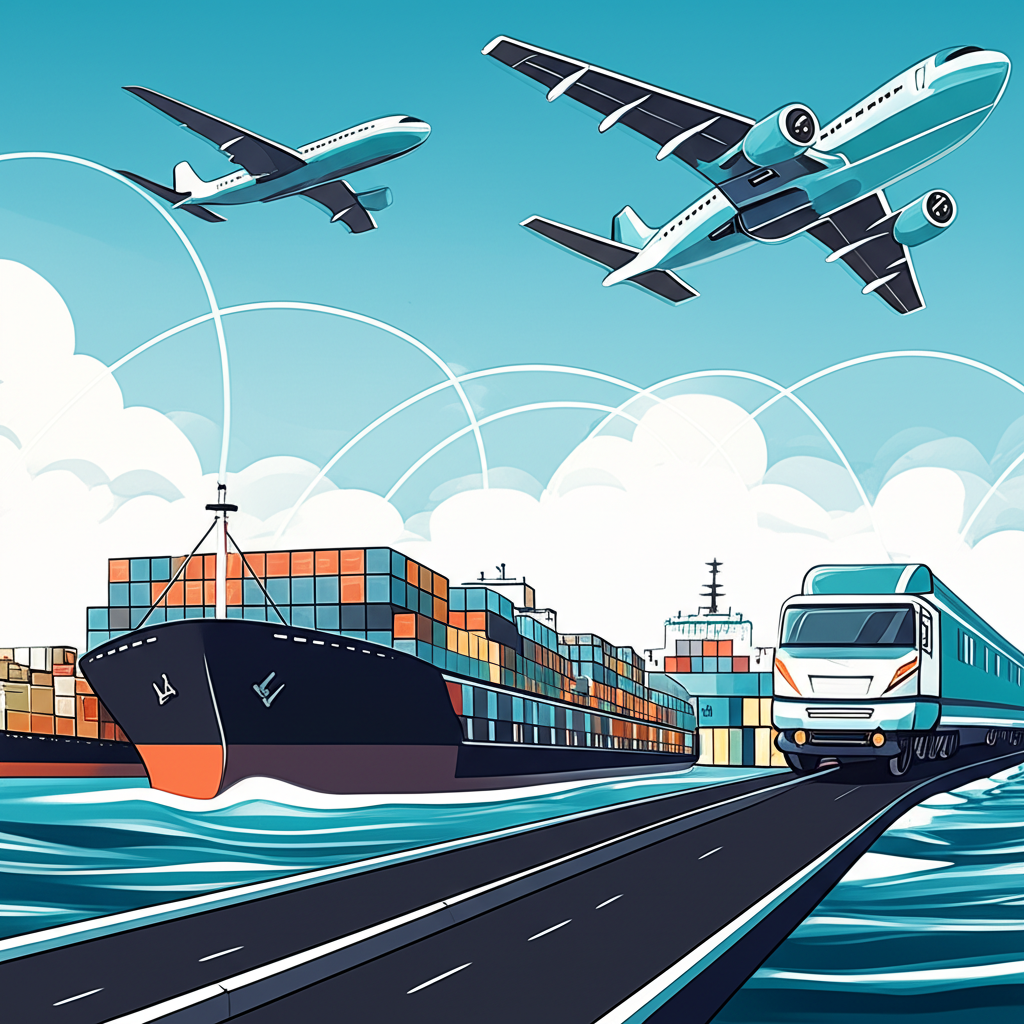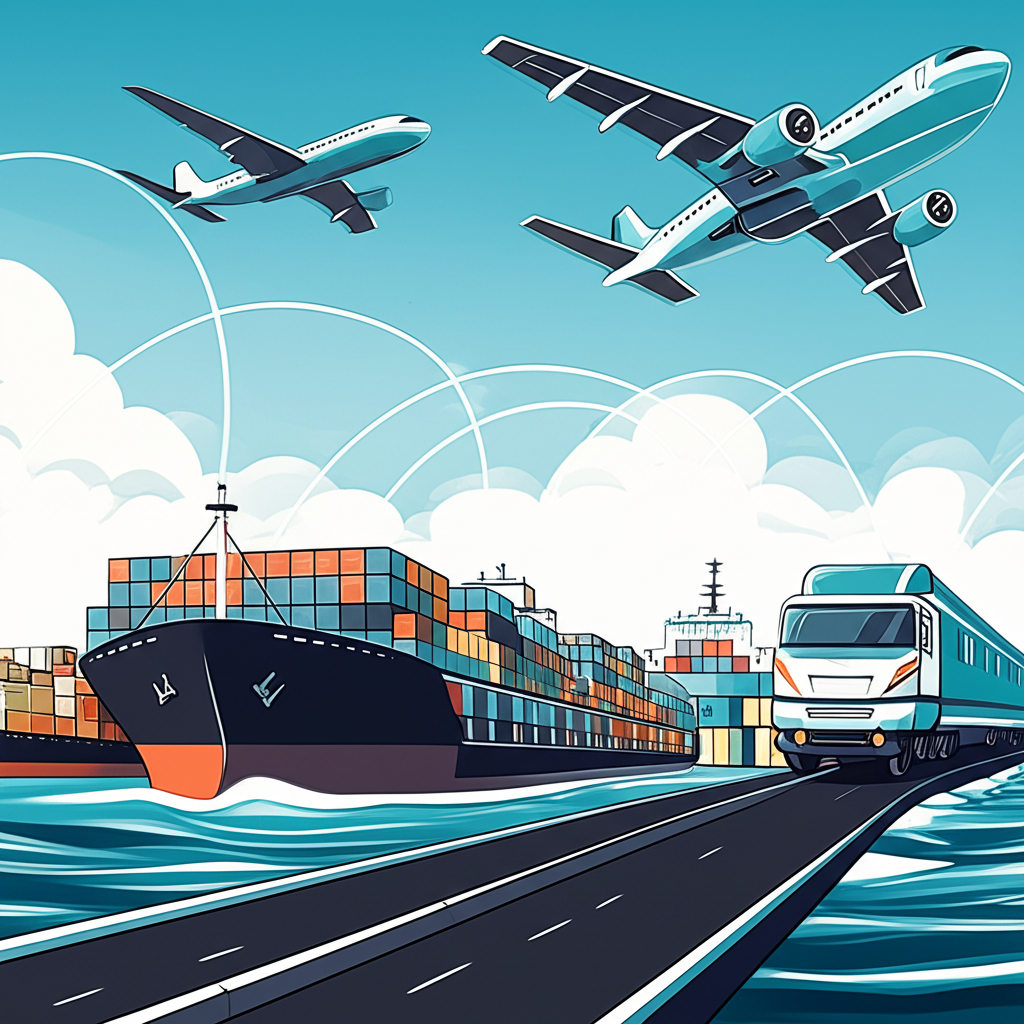Understanding Transportation ETFs

Exchange-traded funds focused on the transportation sector—commonly known as Transportation ETFs—offer investors a strategic way to access one of the most essential engines of global commerce. Rather than picking individual stocks, these funds pool capital to invest in a diversified group of companies involved in moving goods and people across air, sea, road, and rail networks. From freight logistics giants to airline operators and shipping conglomerates, Transportation ETFs capture the breadth of an industry that keeps supply chains running and economies functioning. Because these funds spread exposure across multiple players and sub-industries, they reduce the volatility associated with single-company investments while still allowing participation in sector-wide growth. As consumer demand, e-commerce, and infrastructure modernization continue to reshape how the world moves, understanding this asset class becomes increasingly valuable for portfolio builders.
Why Invest in Transportation ETFs? Key Benefits & Market Drivers

For investors seeking exposure to real-world economic activity, Transportation ETFs stand out due to their strong ties to macroeconomic trends. One of the most significant advantages is diversification—by holding a basket of companies spanning different transportation modes, these funds help mitigate the risk of betting on any one business. More importantly, the sector behaves as a barometer for economic health: when consumer spending rises, demand for shipping and travel increases, directly benefiting transportation firms. This close correlation with GDP growth makes these ETFs useful tools for capitalizing on expanding economies.
Several powerful forces are fueling long-term demand. The rise of e-commerce has transformed logistics, driving rapid growth in last-mile delivery and warehousing infrastructure. At the same time, governments and private investors are pouring resources into modernizing roads, ports, and rail systems—efforts that create sustained tailwinds for transportation operators. Global trade volumes, fuel prices, and regulatory landscapes also play pivotal roles. For example, lower oil prices can lift airline and trucking margins, while trade agreements or disruptions influence freight demand. Although the sector tends to underperform during recessions, its cyclical nature offers opportunities for tactical allocation based on economic cycles.
Navigating the Transportation Landscape: Core Sub-Sectors

The transportation industry is far from uniform—it encompasses a variety of specialized sub-sectors, each responding to different market conditions and risk factors. A thorough understanding of these segments is crucial when evaluating which ETF aligns best with your investment goals, as fund performance often reflects their underlying composition.
Air Freight & Logistics ETFs: The Backbone of Global Trade
This segment includes companies responsible for managing the movement of goods by air, warehousing, and supply chain coordination. Industry leaders like FedEx and UPS dominate, but the space also includes third-party logistics providers that optimize delivery efficiency for retailers and manufacturers. These firms thrive when global manufacturing activity is high and cross-border trade is strong—conditions amplified by e-commerce. Timely delivery expectations have pushed companies to invest in automation, real-time tracking, and distribution networks, making this sub-sector highly sensitive to technological innovation and consumer behavior shifts. ETFs targeting air freight and logistics often reflect improvements in operational efficiency and digital integration across supply chains.
Airlines & Aerospace ETFs: Riding the Demand for Travel
Encompassing both passenger and cargo airlines as well as aerospace manufacturers, this area is deeply influenced by fuel costs, consumer travel patterns, and regulatory frameworks. Airlines face high fixed costs and thin margins, making them vulnerable to oil price swings and economic slowdowns. However, surges in leisure and business travel—especially post-pandemic—can lead to strong earnings rebounds. Aerospace firms, meanwhile, depend on commercial aircraft orders, defense contracts, and innovation cycles. While passenger traffic tends to be more volatile, cargo operations often mirror broader industrial activity, offering a partial hedge within the same sub-sector.
Marine Shipping ETFs: Powering International Commerce
Marine transport remains the backbone of international trade, moving bulk raw materials, energy, and finished goods across oceans. The sector can be broken down into three main categories: container shipping (for manufactured products), dry bulk (handling commodities like coal and grain), and tankers (carrying crude oil and refined products). Shipowners’ profitability hinges on freight rates, which are notoriously cyclical—driven by global trade demand and fleet capacity. Periods of supply chain congestion or geopolitical tensions can send rates soaring, while overbuilding of vessels can lead to prolonged downturns. This volatility creates opportunities for investors who understand freight market dynamics and timing.
Road & Rail Transportation ETFs: Essential Infrastructure
Road and rail networks form the physical foundation of domestic logistics. Trucking companies handle local and regional delivery, particularly the final leg of e-commerce shipments, while railroads offer energy-efficient transport for heavy cargo like coal, grain, and intermodal containers. These modes are highly dependent on domestic economic output, fuel prices, labor markets, and infrastructure quality. Railroad operators, in particular, benefit from pricing power and asset-heavy business models that generate stable cash flows. During uncertain economic periods, this sub-sector can act as a relative safe haven due to the persistent need for essential freight movement.
Top Transportation ETFs to Consider for Your Portfolio
Among the available options, certain Transportation ETFs have emerged as go-to choices due to their size, transparency, and reliable tracking of key benchmarks. While all provide access to the transportation ecosystem, their methodologies, fees, and sector weightings differ—impacting both risk and return profiles. Below is a comparison of three widely held funds that investors frequently consider.
| ETF Name | Ticker | Expense Ratio | Primary Index | Key Sector Focus |
|---|---|---|---|---|
| iShares U.S. Transportation ETF | IYT | 0.39% | Dow Jones Transportation Average | Rail, Trucking, Airlines, Logistics |
| SPDR S&P Transportation ETF | XTN | 0.35% | S&P Transportation Select Industry Index | Airlines, Air Freight & Logistics, Marine, Road & Rail |
| Fidelity Transportation ETF | FTXR | 0.08% | MSCI US IMI Transportation Index | Diversified Transportation, lower expense ratio |
iShares U.S. Transportation ETF (IYT): A Closer Look
The iShares U.S. Transportation ETF, or IYT, is one of the longest-standing funds in this category and is often cited in market commentary as a proxy for the health of the American economy. It tracks the Dow Jones Transportation Average, a price-weighted index of 20 major U.S. transportation companies. This structure means that higher-priced stocks exert more influence on performance, regardless of company size—a nuance that distinguishes it from market-cap-weighted funds. IYT has significant allocations to railroads and trucking firms, reflecting the critical role these modes play in domestic freight. With an expense ratio of 0.39%, it sits in the mid-range for sector-specific ETFs. Given its track record and inclusion of industry titans like Union Pacific and Delta Air Lines, IYT is frequently used as a benchmark by analysts and economists.
SPDR S&P Transportation ETF (XTN/XTF): Performance & Holdings
Offered by State Street Global Advisors, the SPDR S&P Transportation ETF (XTN), sometimes referred to as XTF, follows the S&P Transportation Select Industry Index using an equal-weighted approach. This means each company in the index has the same impact on returns, giving smaller firms a larger role than they would have in a market-cap-weighted fund. As a result, XTN can be more responsive to broad-based rallies in mid- and small-cap transportation stocks. Its 0.35% expense ratio is competitive, and the fund’s holdings span airlines, logistics, marine, and surface transport. Because of its methodology, XTN may experience higher volatility than IYT, but it also has greater upside potential during strong sector-wide upswings. Investors can find updated performance and holding data directly on State Street’s website.
Fidelity Transportation ETF (FTXR): Features and Focus
Fidelity’s entry into the space, FTXR, stands out primarily due to its extremely low expense ratio of just 0.08%—one of the most cost-efficient options available. It tracks the MSCI US IMI Transportation Index, which covers large-, mid-, and small-cap transportation companies across the U.S. market. This broader universe allows FTXR to offer more comprehensive exposure than funds limited to large caps. The strategy is straightforward: provide low-cost, diversified access to the full spectrum of transportation businesses, from national logistics operators to regional carriers. Its affordability and wide coverage make it an appealing choice for investors focused on minimizing fees while maintaining exposure to sector-wide trends.
How to Evaluate and Choose the Best Transportation ETF
Selecting the right Transportation ETF requires more than just comparing tickers. Investors should assess several core factors to ensure alignment with their portfolio strategy and risk appetite.
- Expense Ratios: Even small differences in annual fees compound over time. A fund like FTXR with a 0.08% fee will leave more returns in your pocket compared to higher-cost alternatives, all else being equal.
- Liquidity: High trading volume and tight bid-ask spreads make it easier to enter and exit positions without slippage. ETFs like IYT and XTN typically offer strong liquidity due to their size and trading history.
- Underlying Index and Methodology: Is the fund market-cap weighted, price-weighted, or equal-weighted? Does it focus on U.S. large caps or include small and mid-sized firms? IYT’s price-weighting differs significantly from XTN’s equal-weighting, leading to different risk and return behaviors.
- Diversification of Holdings: Review how many companies the ETF holds and how concentrated its top holdings are. A fund with heavy exposure to just one or two companies may be more volatile, while broader diversification spreads risk.
- Historical Performance: While past performance doesn’t guarantee future results, it can reveal how well the fund tracks its index and how it behaves in different market environments—such as recessions, recoveries, or periods of high inflation.
- Tracking Error: This metric shows how closely the ETF mirrors its benchmark. A lower tracking error indicates efficient management and accurate replication of the index.
For deeper insight, always consult the fund’s prospectus and fact sheet, which detail its investment strategy, risks, fees, and portfolio composition.
Beyond the Mainstream: Exploring Global, Inverse, and Emerging Transportation ETFs
While most investors begin with U.S.-focused funds, a range of specialized ETFs exist for those pursuing niche strategies or broader exposure.
Global Transportation ETFs: Expanding Your Horizon
For portfolio diversification beyond American markets, global Transportation ETFs offer exposure to international shipping lines, European rail operators, Asian logistics hubs, and emerging-market infrastructure firms. These funds can tap into growth in regions where urbanization and digital adoption are accelerating demand for transport services. However, they introduce additional risks such as currency fluctuations, political instability, and regulatory differences. While less common than U.S.-focused alternatives, global options can enhance diversification for investors with a long-term, multi-region outlook.
Inverse & Leveraged Transportation ETFs: High Risk, High Reward
These are not buy-and-hold vehicles but tools for short-term traders. Inverse ETFs are designed to deliver returns opposite to the sector’s daily move—gaining when transportation stocks fall. Leveraged ETFs aim to multiply daily returns, often by 2x or 3x. Both reset daily, meaning compounding can cause significant deviation from expected long-term performance. For example, a 2x leveraged fund might not double a multi-year return due to daily rebalancing effects. These products carry substantial risk and are unsuitable for novice investors or long-term holders.
The Future of Transportation: Innovation and Thematic ETFs
Technological disruption is reshaping the industry. Autonomous trucks, electric delivery fleets, drone logistics, and urban air mobility are no longer science fiction—they’re being tested and deployed. While dedicated thematic ETFs focused purely on autonomous transportation remain limited, many innovations are already embedded within existing transportation companies. Firms investing in AI-driven route optimization, electric vehicle infrastructure, or smart warehousing may see outsized growth. Forward-thinking investors should monitor how legacy players adapt, as well as watch for new ETFs that focus specifically on sustainable logistics, clean transport, or smart infrastructure.
Risks and Considerations When Investing in Transportation ETFs
Despite their growth potential, Transportation ETFs come with notable risks that require careful consideration.
- Economic Sensitivity: The sector contracts during downturns as businesses and consumers reduce spending, leading to lower shipping volumes and air travel.
- Fuel Price Volatility: Diesel, jet fuel, and bunker fuel are major cost components. Sudden oil price spikes can compress margins, especially for airlines and trucking firms with limited pricing power.
- Regulatory Pressures: Emissions standards, labor regulations, and international trade policies can increase compliance costs or restrict operations.
- Labor Challenges: Strikes, driver shortages, or union negotiations—common in rail and trucking—can disrupt operations and increase expenses.
- Sub-Sector Vulnerabilities: Airlines face unpredictable demand from pandemics or geopolitical events; marine shipping is exposed to freight rate swings; road and rail depend on infrastructure investment and weather conditions.
- Supply Chain Fragility: Events like port congestion, natural disasters, or trade disputes can disrupt logistics networks, affecting profitability even for well-managed firms.
Awareness of these risks helps investors position their portfolios appropriately, whether as a growth play, a cyclical bet, or a diversified satellite holding.
Conclusion: Driving Your Investment Strategy Forward
Transportation ETFs offer a compelling way to gain exposure to a sector that powers global trade, supports consumer demand, and responds dynamically to economic shifts. Whether through rail networks, air cargo routes, or digital logistics platforms, these funds tap into companies that keep the world moving. By analyzing sub-sector compositions, comparing expense ratios, and understanding index methodologies, investors can select ETFs that match their goals. While the sector’s cyclical nature and exposure to fuel and labor costs present challenges, its long-term growth potential—fueled by e-commerce, infrastructure investment, and technological innovation—remains strong. Success lies in aligning your ETF choices with your risk tolerance, time horizon, and broader financial objectives, backed by thorough research and a clear investment plan.
Frequently Asked Questions About Transportation ETFs
What are the key differences between actively managed and passively managed Transportation ETFs?
Passively managed Transportation ETFs aim to replicate the performance of a specific transportation index, such as the Dow Jones Transportation Average. They typically have lower expense ratios because they do not require active management decisions from a portfolio manager. Most popular Transportation ETFs (like IYT, XTN, FTXR) are passively managed. Actively managed Transportation ETFs, in contrast, have a portfolio manager who makes investment decisions, attempting to outperform a benchmark index or the broader market by selecting specific stocks. While they offer the potential for higher returns, they generally come with higher expense ratios and may not always succeed in outperforming their passive counterparts.
How do geopolitical events, such as trade wars, impact Transportation ETF performance?
Geopolitical events, particularly trade wars, can significantly impact Transportation ETFs. Trade wars often lead to reduced global trade volumes, which directly affects marine shipping, air freight, and rail transport companies that rely on international movement of goods. Tariffs can increase costs, reduce demand, and disrupt established supply chains, leading to lower profitability for transportation firms. Such events introduce uncertainty and can cause volatility in the sector, potentially leading to underperformance of related ETFs.
Can Transportation ETFs be used as a hedge against inflation?
The role of Transportation ETFs as an inflation hedge is complex. On one hand, some transportation assets, particularly infrastructure-related components (like rail networks or ports), may offer some protection as their revenue streams can be tied to economic activity that keeps pace with inflation. However, transportation companies are also heavily exposed to rising costs, such as fuel and labor, which can increase significantly during inflationary periods. If companies cannot pass these increased costs onto consumers or clients, their profit margins will suffer. Therefore, while some aspects might offer a degree of inflation protection, the sector is also vulnerable to inflationary pressures, making it not a straightforward hedge.
What is the typical expense ratio range for Transportation ETFs, and how does it affect returns?
The expense ratio for Transportation ETFs typically ranges from around 0.08% to 0.50%. For example, Fidelity Transportation ETF (FTXR) has a very low expense ratio of 0.08%, while iShares U.S. Transportation ETF (IYT) is around 0.39%. The expense ratio directly reduces your net returns. Over long investment horizons, even small differences in expense ratios can accumulate into substantial amounts, impacting the overall growth of your investment. Lower expense ratios are generally preferred, assuming all other factors are equal.
Are there any specific economic indicators that investors in Transportation ETFs should monitor closely?
Yes, several economic indicators are particularly relevant. Investors should monitor:
- GDP Growth: Strong economic growth generally boosts demand for transportation services.
- Consumer Spending/Retail Sales: Directly impacts demand for logistics and e-commerce delivery.
- Industrial Production: Higher production means more raw materials and finished goods need to be transported.
- ISM Manufacturing PMI: A key indicator of manufacturing activity, which correlates with freight demand.
- Oil Prices (WTI/Brent Crude): Directly affects fuel costs for airlines, trucking, and shipping.
- Global Trade Data: Essential for marine shipping and international air freight.
How diversified are the top Transportation ETFs across different sub-sectors?
The level of diversification across sub-sectors varies among top Transportation ETFs. For instance, IYT, tracking the Dow Jones Transportation Average, has historically shown a heavier weighting towards rail and trucking. XTN, with its equal-weighting methodology, might offer more balanced exposure across airlines, air freight & logistics, marine, and road & rail, giving smaller companies equal footing. FTXR, tracking a broader MSCI index, aims for comprehensive coverage across large, mid, and small-cap companies within the entire sector. Investors should review each ETF’s specific holdings and sector allocation to understand its diversification profile.
What tax implications should I be aware of when investing in Transportation ETFs?
Investing in Transportation ETFs generally has similar tax implications to investing in individual stocks or other ETFs. These include:
- Capital Gains Tax: You may owe capital gains tax when you sell your ETF shares for a profit. This can be short-term (if held for less than a year) or long-term (if held for over a year), with different tax rates.
- Dividend Tax: ETFs may distribute dividends from their underlying holdings, which are typically taxed as ordinary income or qualified dividends.
- Wash Sale Rule: Be aware of the wash sale rule if you sell an ETF for a loss and repurchase a substantially identical ETF within 30 days.
It’s advisable to consult with a tax professional for personalized advice, as tax laws can vary and are subject to change.
Is it possible to invest in transportation infrastructure directly through ETFs, or only through companies within the sector?
While traditional Transportation ETFs primarily invest in publicly traded companies that *operate* within the transportation sector (e.g., airlines, trucking companies, railroads), there are also specialized infrastructure ETFs that focus more directly on companies that own or operate infrastructure assets like toll roads, airports, seaports, and energy pipelines. These funds might offer a more direct play on infrastructure development rather than just the service providers. Some broader transportation ETFs may include companies that also own significant infrastructure assets, but dedicated infrastructure ETFs exist for a more direct exposure.
How have recent supply chain disruptions affected the long-term outlook for Transportation ETFs?
Recent supply chain disruptions (e.g., from the pandemic, geopolitical events) have highlighted the critical importance and fragility of global logistics. In the short term, disruptions led to increased shipping costs and bottlenecks, benefiting some segments (like marine shipping) while challenging others (like manufacturers reliant on timely deliveries). Long-term, these disruptions are driving significant investment in supply chain resilience, automation, and diversification. This could lead to increased demand for robust logistics technology, warehousing, and more localized transportation networks. Companies within Transportation ETFs that adapt and innovate in response to these challenges are likely to see sustained growth, improving the long-term outlook for well-positioned funds.
What alternatives exist to Transportation ETFs for gaining exposure to the transportation sector?
Several alternatives exist for gaining exposure to the transportation sector:
- Individual Stocks: You can invest directly in individual transportation companies (e.g., major airlines, logistics giants, railroad operators). This offers higher concentration but also higher risk.
- Mutual Funds: Some mutual funds specialize in the transportation or industrial sectors, providing actively managed exposure.
- Sector-Specific Index Funds: Similar to ETFs, but often structured as mutual funds, tracking a specific transportation index.
- Infrastructure Funds: As mentioned, these focus on companies owning and operating transportation infrastructure.
- Broad Industrial ETFs: Many industrial sector ETFs will have a significant allocation to transportation companies, though it won’t be pure-play exposure.



No responses yet